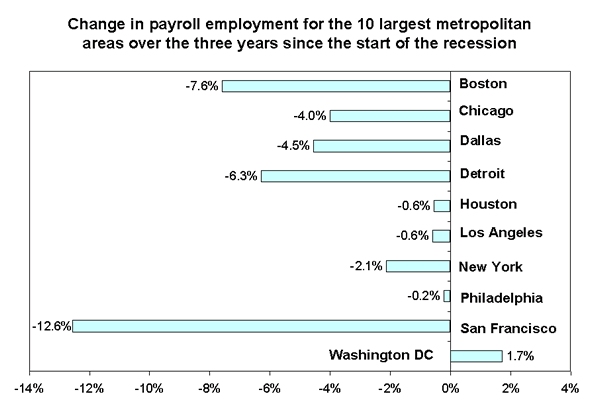See Snapshots Archive.
Snapshot for April 28, 2004 (special jobs edition).
Three years after recession starts, most metropolitan areas mired in job deficit
Of the 194 million Americans that live in the 100 largest metropolitan areas, three-quarters of them live in metropolitan areas that have lost jobs since the recession began. In fact, 28 months into the economic recovery, and a full three years since the start of the recession, 57 of the largest 100 metropolitan areas are not back to their pre-recession jobs levels. But it is the largest of these metropolitan areas that have been the hardest hit—nine of the top 10 largest metropolitan areas have seen job loss over this period. Of these top 10, only the Washington, D.C. area has more jobs now than when the recession began.

Furthermore, most of the 43 metropolitan areas that have experienced some job growth are located in states with high population growth. The top five metropolitan areas in terms of job growth have something in common—they are all located in one of the top four states in terms of growth in their non-elderly population. As a consequence, strong job growth may not be a sign of especially strong labor markets in these metropolitan areas, because job creation still may be lagging the demand and need for jobs.
Job change since beginning of recession in the 100 largest metropolitan areas ![]()
Today’s Snapshot was written by EPI Economic Analysis and Research Network (EARN) director Michael Ettlinger and EPI research assistant Sujan Vasavada.
